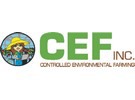Fast Company recently published and article entitled "This Google Ventures-backed indoor farming startup just opened its biggest farm yet". In the article Ms Peters identifies a few of the larger indoor farming operations, Bowery, Plenty, to name a few, and where these entities are today verses their projections from a couple of years ago. Bruce Carman of Controlled Environmental Farming read the article and shares his two cents on the matter:
"In most cases, these entities have fallen short of their own growth projections in terms of the number of facilities they predicted would be operational at this point in time.
"As an owner / operator and the developer of Indoor Agriculture Technology for Urban Farming locations I would like to share my vision of indoor agriculture. First, location, location, location, it is very important. Facilities should be placed geographically where the consumer is. Urban Farming, within its truest form, means that facilities will be placed in the downtown districts of a municipality, next to the opera house or the sports stadium. I realize this is disruptive to conventional operations but, doing so provides reduced transportation costs, fresher more nutritional product with less food waste, greater affordability and sustainable economical development. Carbon footprint reduction is a huge winner within this concept.
"Second, facilities need to offer product diversity. Leafy greens alone will not provide the necessary product variety for a successful Urban Farming entity. How often do you go to the store for just one item? The Urban Farm is no different, you don't go to just acquire leafy greens. When you go, you want to be able to purchase locally grown fruit, vegetables, herbs, shrimp and fish. In short, you would like to be able to purchase an entire meal and just not the core of the salad.
"Third, Urban Farming entities should be closed loop operationally. The ability to produce locally grown, organic products, is the true ideal model for Urban Farming facilities. Resources, like water, are conserved, re-claimed and re-used beneficially. Pollution is reduced or eliminated. Food safety, food security and affordability are increased within the local community. The closed loop system provides for protein based food production, naturally, efficiently, while also providing product diversity. The economic model for the Urban Farm is enhanced and the community benefits.
"Please don't misunderstand my thoughts. Developing cultivation technology is very important and necessary for the evolution of Urban Farming to get where it needs to be, quickly. Equally important, in my view, is food production that occurs outside the box. That provides for new locations, zoning regulations, structures, methods, systems, distribution models and product diversity outside of leafy greens. If we don't invest in those facets of food production too, we will not meet the challenges that are upon us now."
For more information: CEF
CEF
218.370.2005
[email protected]
